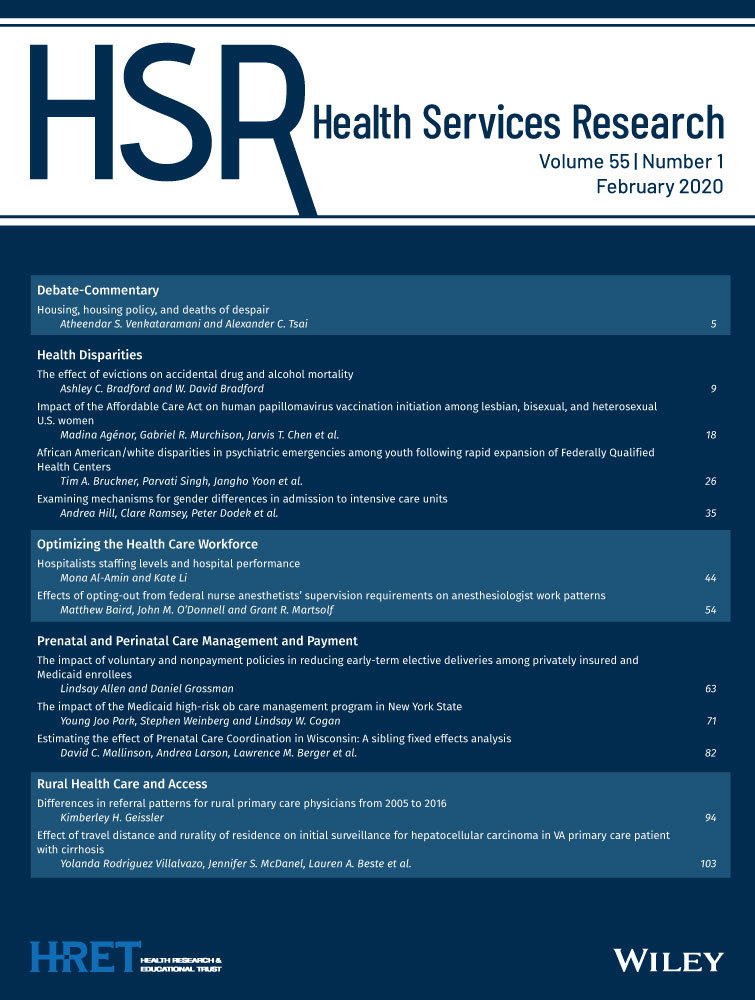Differences in referral patterns for rural primary care physicians from 2005 to 2016
Funding information
This work was funded by internal University of Massachusetts Amherst awards.
Abstract
Objective
To examine differences in referral patterns in a nationally representative sample between primary care physicians (PCP) practicing in rural vs nonrural areas and changes over time.
Study Design
Using the 2005-2016 National Ambulatory Medical Care Survey and multivariate logit regression models, I compare referral patterns of PCPs in rural vs nonrural areas.
Data Collection
Multiple years of data were combined.
Principal Findings
A PCP visit was 1.9 percentage points (95% confidence interval: 0.1 pp, 3.8 pp) more likely to result in a referral in nonrural areas than rural areas, controlling for physician and patient characteristics, a 17 percent increase. This difference is driven by a widening gap in referral rates between nonrural and rural areas over time, with large differences in later periods. The regression-adjusted predicted probability of a PCP visit resulting in a referral was 71 percent higher in nonrural than rural areas in 2013-2014 and 92 percent higher in 2015-2016.
Conclusions
Recognizing that the optimal PCP referral rate is unknown, referrals are less common in rural areas with a widening gap in recent years. This difference may reflect specialist availability, distance to care, or patient preferences. As changes occur to health care financing and delivery, continuing to monitor practice patterns is important to ensure patients are receiving appropriate levels of care across geographic regions.




